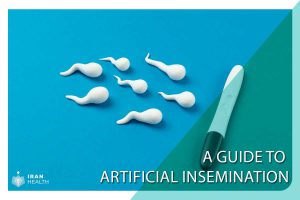Is Nose Surgery Painful? Quick answer!
Nose surgery, also known as rhinoplasty, does involve some pain and discomfort, especially in the initial recovery period after surgery. However, the pain is manageable with medication and typically subsides within the first week.
During the surgery, you will be under general anaesthesia, so you will not feel any pain during the procedure. Once the anaesthesia wears off, it is common to experience some swelling, bruising, and nasal congestion, which can cause mild to moderate discomfort.
Your surgeon will prescribe pain medication to help relieve any pain or discomfort in the days following surgery. It’s important to take the medication as directed. The worst pain and discomfort usually lasts only a few days, though it may take a week or two to go away completely.
While rhinoplasty recovery does involve some temporary pain, most patients report that it is tolerable, especially when weighed against the benefits of achieving their desired nose shape and improved breathing or appearance. The long-term results make the short discomfort period worthwhile for most rhinoplasty patients.
The Decision to Undergo Rhinoplasty
1. Self-Esteem and Confidence
Many opt for rhinoplasty to boost their self-esteem and confidence. A harmonious facial appearance can work wonders for mental and emotional well-being.
2. Correcting Structural Issues
Preparing for Rhinoplasty
Structural issues such as a deviated septum or breathing difficulties can prompt individuals to seek rhinoplasty for functional improvement.
3. Consultation and Communication
Effective communication with your surgeon is key. Discuss your expectations, concerns, and fears about pain during the consultation.
4. Choosing the Right Surgeon
Selecting a skilled and experienced surgeon significantly reduces the likelihood of complications and discomfort post-surgery.
The Rhinoplasty Procedure
5. Anesthesia
During the procedure, you’ll be under anaesthesia. This ensures you won’t feel pain during the surgery itself.
6. The Surgery Itself
The surgery involves reshaping the nose’s structure. While asleep, your surgeon will meticulously sculpt your nose according to the pre-discussed plan.
7. Post-Surgery Pain
Now, here comes the part where many wonder about the pain. After the anaesthesia wears off, some discomfort is expected. Your surgeon will prescribe pain medication to manage this.
Recovery and Discomfort
8. Swelling and Bruising
Swelling and bruising around the nose and eyes are common after rhinoplasty. These are usually the most uncomfortable aspects of recovery.
9. Nasal Congestion
Nasal congestion can persist for a few weeks post-surgery, contributing to discomfort.
Managing Discomfort
10. Pain Medication
Continuing with prescribed pain medication as directed by your surgeon can significantly improve your comfort levels.
11. Follow Post-Op Instructions
Adhering to post-operative instructions, including keeping your head elevated and avoiding strenuous activities, is crucial for a smooth recovery.
The Long-Term Results
12. Achieving Desired Results
Over time, as swelling subsides and your nose heals over time, you’ll begin to see the desired results, which can significantly boost your confidence and satisfaction.
13. Emotional Healing
Rhinoplasty often brings emotional healing, improves self-esteem, and helps individuals feel more comfortable in their skin.
What is the most painful part of a nose job?
The most painful part of a nose job or rhinoplasty is usually the first few days after the surgery. Here are some details on what causes the discomfort:
- Swelling: Significant swelling and inflammation occur around the nose and eyes after surgery. This puts pressure on the tissues and causes a feeling of tightness and pain. Ice packs can help reduce swelling.
- Incision pain: Small incisions made inside the nostrils during surgery will be tender as they heal. Proper pain medication helps manage this discomfort.
- Splint pain: An external plastic splint is often applied after surgery to protect the nose as it heals. This can create pressure and pain, especially when removing it about one week after surgery.
- Nasal congestion: It’s common to have a “stuffed up” nose feeling after surgery due to swelling and inflammation inside the nasal passages. This congestion can cause discomfort.
- Head elevation: Keeping the head elevated is key to reducing swelling, but constantly staying propped on pillows can also become uncomfortable.
- Medication side effects: Some post-op medications like painkillers or antibiotics may cause side effects like nausea or drowsiness.
FAQs
Here are answers to the frequently asked questions about pain and recovery after rhinoplasty:
How long does the pain last after rhinoplasty?
Can anything be done to reduce bruising after rhinoplasty?
How can I manage pain after my rhinoplasty surgery?
Apply cold compresses to your nose and face to reduce swelling and pain.
Keep your head elevated on extra pillows to minimize swelling.
Get Answers About Pain and Discomfort at a Free Iran Health Agency Consultation
Considering rhinoplasty but concerned about pain? At Iran Health Agency, we offer free initial consultations to prospective patients so that all your questions and concerns can be addressed. Our skilled surgeons will explain the entire process during your consultation, from the anaesthesia used during surgery to the recovery and pain management afterwards.



